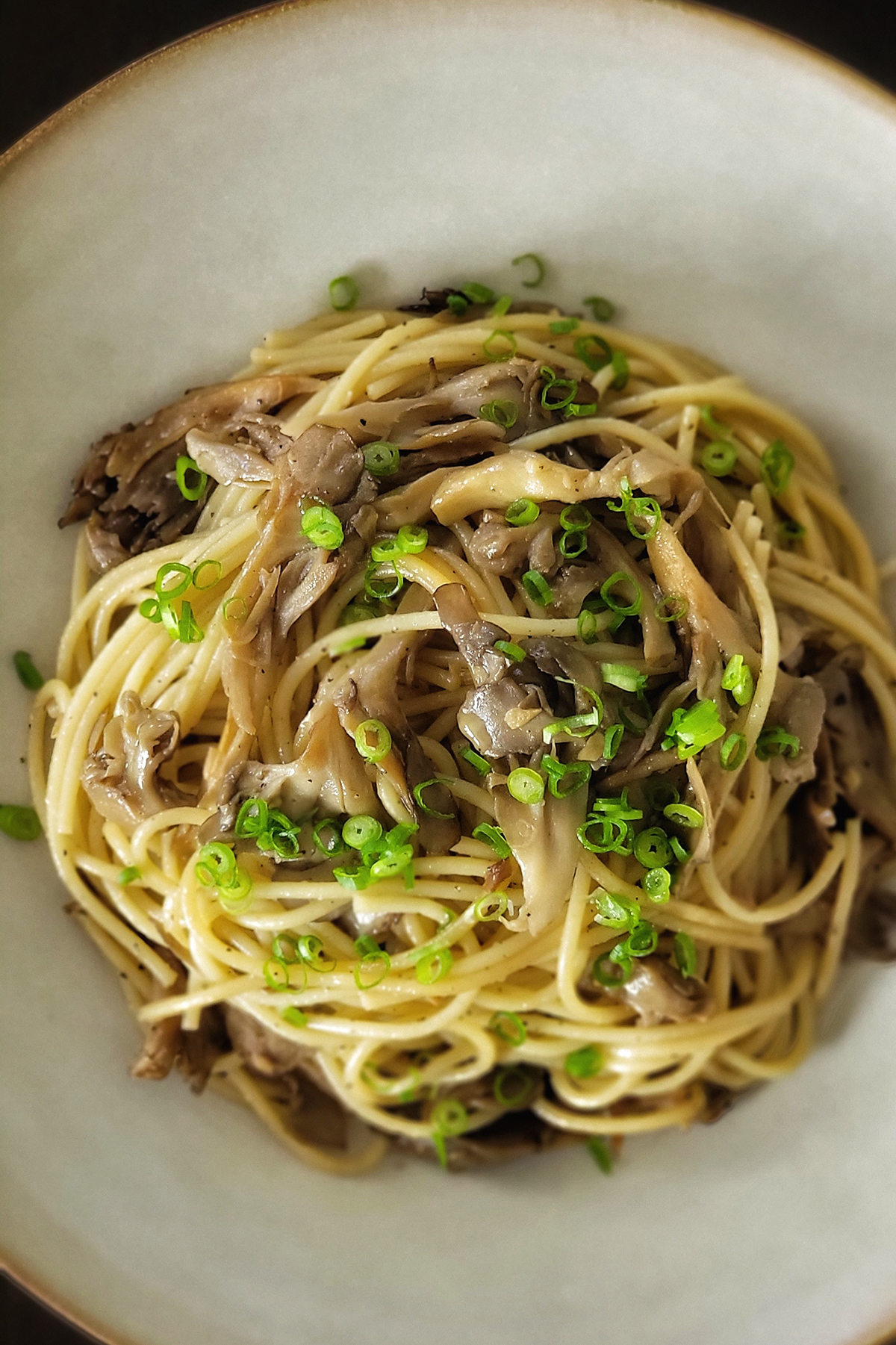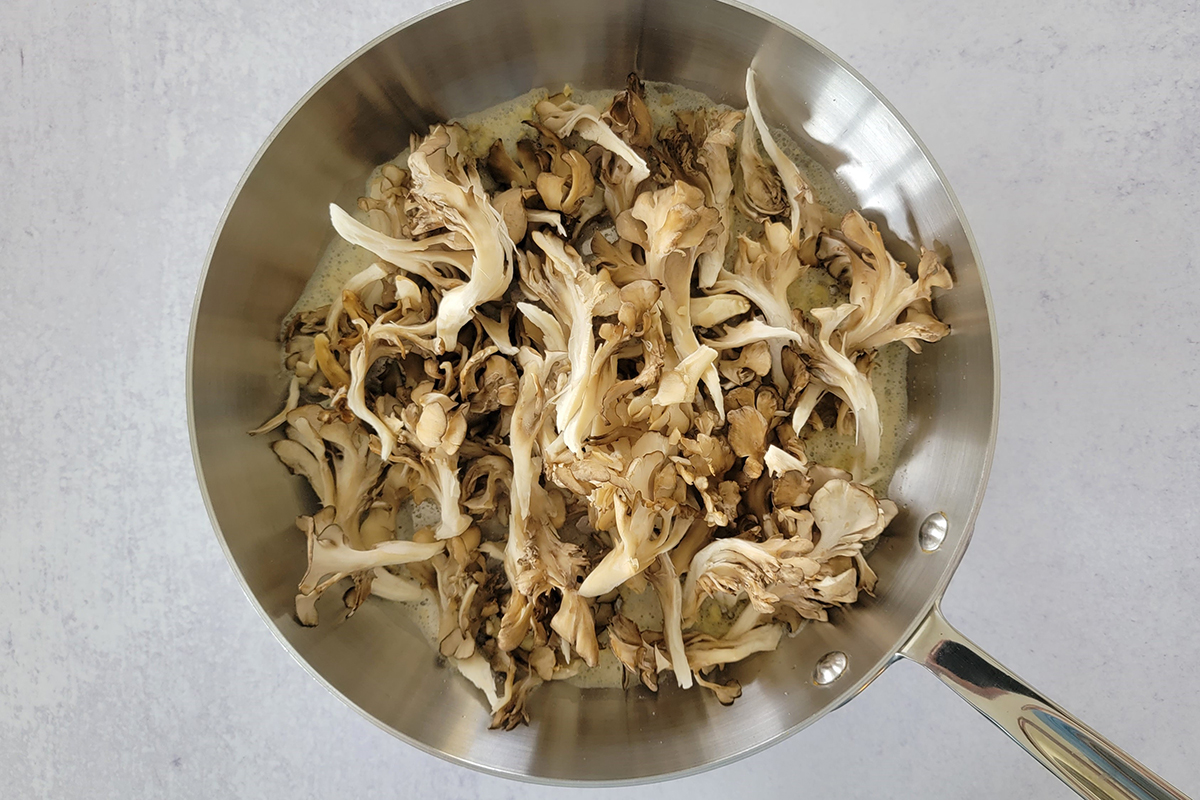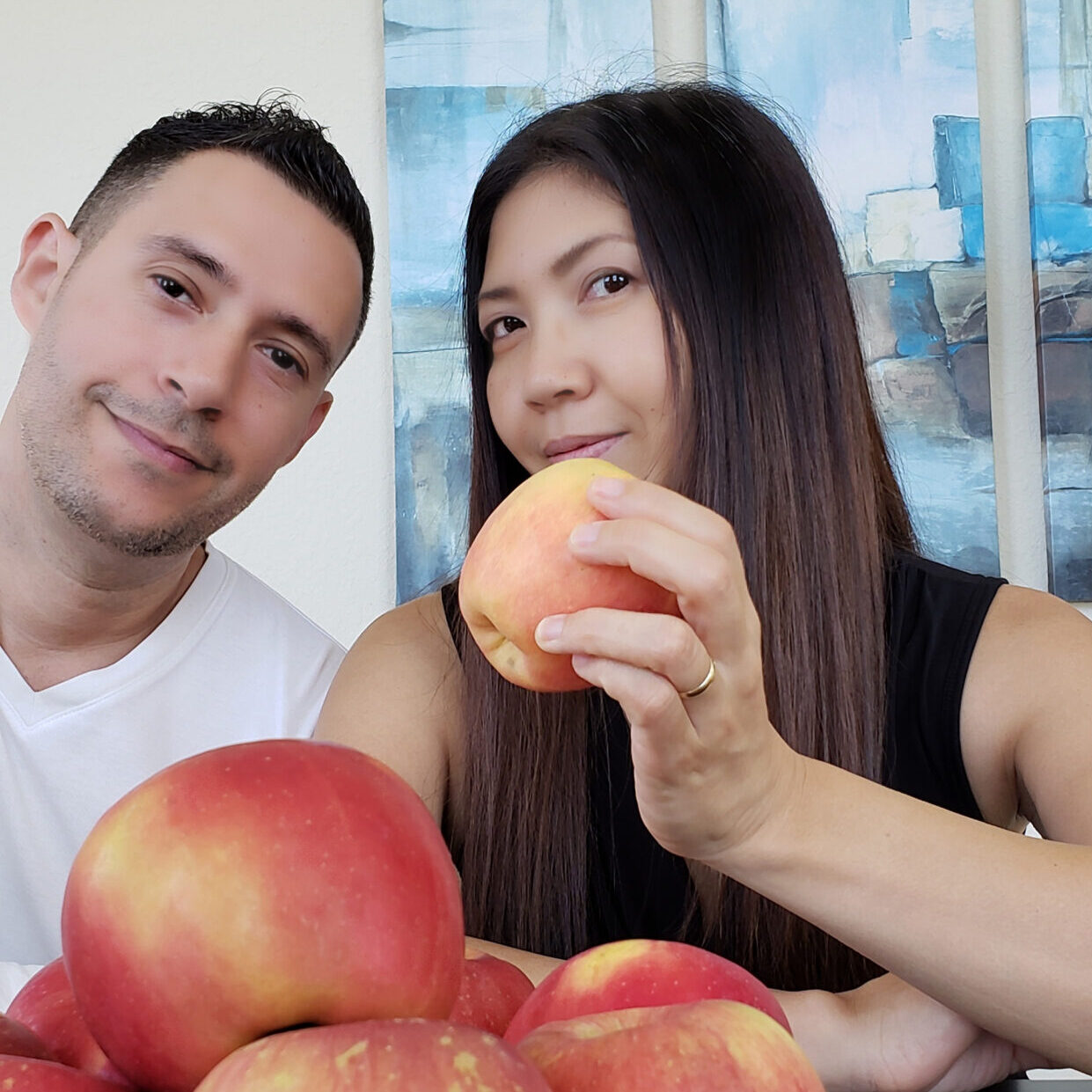Last Updated on June 3, 2023
[ヴィーガンバター醤油舞茸パスタ]
Butter Shoyu Maitake Pasta is a Japanese fusion pasta dish featuring maitake mushroom cooked in the popular Japanese flavor combination of butter + shoyu (soy sauce) using vegan butter. It’s comforting, easy to make, and irresistible with the taste of butter shoyu. This pasta is one of my favorites to make in fall!
Butter & Shoyu (Soy Sauce)
If you haven’t tried the flavor marriage of butter (vegan butter) and shoyu (soy sauce), you might be missing out on something awesome!
You may know well enough that soy sauce is one of the most commonly used seasoning sauce in Japan. But not many non-Japanese people know about this addicting taste of butter & shoyu (soy sauce) together. We call it “butter shoyu [バター醤油]” in Japanese.
Of course, any typical butter shoyu dishes use dairy butter. However, you can get the same satisfaction using vegan butter! Butter shoyu is a widely popular flavor combination in many Japanese dishes such as:
- Veggies (spinach, cabbage, potatoes etc.)
- Japanese Mushrooms (shiitake, shimeji, maitake, enoki etc.)
- Ramen
- Proteins
- Popcorn
- Potato Chips
- Fried Rice
- Pasta
I do this flavor combo all the time and my husband Peter loves it, too (probably more than I do.) Actually, to cook maitake with butter and soy sauce is one of his favorite things to eat! So, I made this vegan version of Butter Shoyu Maitake Pasta using maitake mushrooms.
Maitake Mushroom
Maitake is a very popular mushroom in Japan. In fall when the weather and the color of leaves start changing, the Japanese people appreciate this transition of seasons with food.
Mushrooms are definitely considered as a seasonal food, autumn to winter to be exact. We look forward to see a variety of mushrooms in grocery stores and maitake mushrooms are one of them.
The word “maitake [舞茸]” means “dancing mushrooms” in Japanese. According to Yukiguni Maitake, one of the largest maitake producers in Japan, the origin of the name seems to have a few theories.
- Back in the days, maitake used to be a rare find. So, people would dance with joy when they spotted it.
- The shape of maitake looks like dancing (flying) butterflies hence it was named dancing (flying) mushrooms — in Japanese, the action of flying can be described as “mai (noun) or mau (verb) [舞い or 舞う]”
Maitake mushroom is rich in umami and it has a pleasantly crispy texture. It’s also a good source of fiber and vitamin D. Although it’s rich in umami, the overall flavor is somewhat mild and subtle.
Taste of Butter Shoyu Maitake Pasta
Despite of the use of vegan butter in this butter shoyu maitake pasta, it doesn’t taste too heavy. The main flavor components are the soy sauce and the maitake mushrooms and there’s a hint of garlic flavor in the background.
When the soy sauce is cooked, it gives a slightly smoky taste which works perfectly with the taste of maitake mushrooms. The butter and soy sauce enhances the umami of maitake.
Since I use sake and mirin, they give a hint of natural sweetness as well. It balances the savory element of soy sauce and softens the edge of soy sauce. This, the combinations of soy sauce, sake, and mirin, is another common way to cook Japanese food.
To make a really good butter shoyu maitake pasta, I like using high quality and organic soy sauce and butter.
For the butter, I use European Style Cultured Unsalted Vegan Butter from Miyoko’s Creamery. For the soy sauce, I use Ohsawa Organic Nama Shoyu from Gold Mine Natural Foods.
Choosing the right shape of pasta is always important! For this recipe, spaghetti or thin spaghetti would work the best. I wouldn’t’ recommend short pasta and wide pasta.
Topping for Butter Shoyu Maitake Pasta
Scallion
I recommend to top this dish with fresh scallions. You just can’t go wrong with scallions and any soy sauce flavored dishes. Not only that, it’s always good to have some fresh green color in your dish.
Kizami Nori
Personally, I like to use another topping which is kizami nori (shredded nori) for this pasta. Kizami nori is simply thin strips of toasted nori seaweed (the same nori that you use for sushi.) If you aren’t familiar with Japanese fusion pasta dishes, you may find this odd but it truly works.
Other Suggestions
Another recommendation (optional) would be to garnish with green shiso (perilla leaves.) Shiso is considered as Japanese basil but it’s much more fragrant than the Italian basil and somewhat minty which is very unique.
Be sure to check out the “Step-by-Step Instructions (w/ Photos)” after the Printable Recipe!
Butter Shoyu Maitake Pasta (Vegan)
Ingredients
Cooking Pasta
- 3 qt water
- 2 tbsp sea salt
- 8 oz dried spaghetti or thin spaghetti
The Rest
- 1 tbsp extra virgin olive oil plus more for serving
- 1 tbsp unsalted vegan butter
- 2 cloves garlic minced
- 8 oz maitake mushrooms shredded into small pieces (trim off the bottom if needed)
- 1/4 tsp sea salt plus more for adjusting seasoning
- 1/2 cup pasta cooking water
- 1 tbsp sake
- 1 tbsp mirin
- 1 tbsp soy sauce adjust to taste
- 1/4 tsp black pepper
- 1 scallion finely chopped
Optional Topping
- Kizami nori shredded nori seaweed
Instructions
- Start boiling water for cooking pasta. Once the pasta water is boiling, salt the water and start cooking pasta of your choice (spaghetti or thin spaghetti) according to the instructions on the package. Reserve pasta cooking water.
- While the pasta is cooking, prepare the rest. Heat up a frying pan at medium high heat. Pour extra virgin olive oil and unsalted vegan butter then add garlic. Cook for 1-2 minutes until fragrant.
- Add maitake mushrooms and cook for 3-4 minutes until slightly browned.
- Reduce the heat to medium and add the pasta cooking water, sake and soy sauce. Stir and continue to cook until pasta is done.
- Once the pasta is cooked, drain well and transfer to the pan. Add black pepper and give a quick toss. Adjust the seasoning with extra sea salt if necessary.
- To serve, top it with scallion and drizzle some extra virgin olive oil. Optionally, garnish with kizami nori.
Notes
Choice of Pasta
- Spaghetti or thin spaghetti would work best for this recipe.
- Short pasta and wide pasta aren’t recommended.
Choice of Butter
- Be sure to use unsalted vegan butter for this recipe.
- If using salted butter, adjust the amount of salt to season accordingly.
- I use European Style Cultured Unsalted Vegan Butter from Miyoko's Creamery
Maitake
- Maitake is a popular type of mushroom in Japan. The Japanese word “maitake” means "dancing mushrooms" in Japanese.
- Maitake mushroom is rich in umami and delicate but slightly crispy texture. It’s also rich in fiber.
Sake
- Sake adds a hint of sweetness and gives background flavor and aroma.
- The alcohol content will be cooked off.
- Be sure to look for vegan-friendly sake. I use Organic Junmai Sake from Hakutsuru.
Kizami Nori (Optional Toppings)
- Kizami nori is Japanese shredded nori.
- If you don’t have kizami nori, you can shred sushi nori seaweed with kitchen scissors.
- See more information on Kizami Nori (Shredded Nori) on Vegan Japanese Pantry Guide.
Step-by-Step Instructions (w/ Photos)
Prep: Have the garlic and maitake ready. Set it aside.
1. Start boiling water for cooking pasta.
Once the pasta water is boiling, salt the water and start cooking pasta of your choice (spaghetti or thin spaghetti) according to the instructions on the package. Reserve pasta cooking water.
2. While the pasta is cooking, prepare the rest. Heat up a frying pan at medium high heat. Pour extra virgin olive oil and unsalted vegan butter then add garlic.
Cook for 1-2 minutes until fragrant.
3. Add maitake mushrooms and cook for 3-4 minutes until slightly browned.
4. Reduce the heat to medium and add the pasta cooking water, sake and soy sauce.
Stir and continue to cook until pasta is done.
5. Once the pasta is cooked, drain well and transfer to the pan.
Add black pepper and give a quick toss. Adjust the seasoning with extra sea salt if necessary.
6. To serve, top it with scallion and drizzle some extra virgin olive oil. Optionally, garnish with kizami nori.
If you enjoy the recipe, please share, leave a comment below and tag us @plantbased_matters on Instagram! We appreciate your kind support 🙂





























![VEGAN COLD SOMEN NOODLES WITH DIPPING SAUCE
[ヴィーガン冷やし素麺]
By @plantbased_matters
Both recipes at plantbasedmatters.net
Vegan Cold Somen Noodles with Dipping Sauce is a typical Japanese homestyle noodle dish to enjoy during summer! We live in Florida, so it's kinda always summer!
Silky and smooth cold somen noodles are served with kombu dashi based soy sauce dipping sauce made with Vegan Mentsuyu! With the right aromatic & spicy condiments, you wouldn't be able to stop slurping 😋
As long as you have the Vegan Mentsuyu prepared in advance (batch make and store in the fridge), this noodle will be ready on the table in 20 minutes!
Both recipes, "Vegan Cold Somen Noodles with Dipping Sauce" and "Vegan Mentsuyu (Concentrated Noodle Soup Base)", are available on plantbasedmatters.net](https://plantbasedmatters.net/wp-content/plugins/instagram-feed/img/placeholder.png)